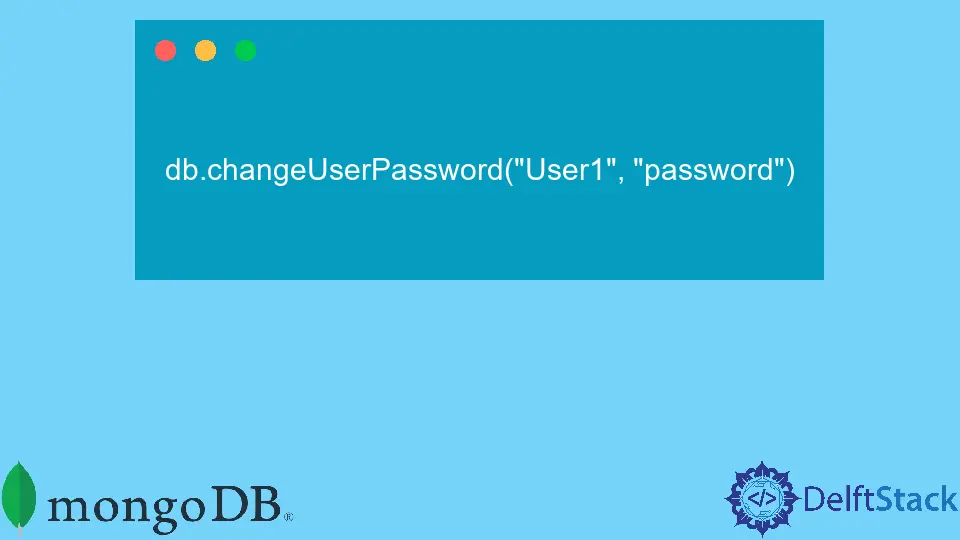How to Update User Password in MongoDB
- Prerequisites
-
Method 1: Using the
update_oneMethod -
Method 2: Using the
update_manyMethod -
Method 3: Using the
find_one_and_updateMethod - Conclusion
- FAQ

Updating user passwords in MongoDB is an essential task for maintaining security and ensuring that your database remains protected against unauthorized access. Whether you’re managing a small application or a large enterprise system, knowing how to update user passwords is crucial.
In this tutorial, we’ll walk you through the steps to update user passwords in MongoDB using Python. We’ll cover different methods, provide clear code examples, and explain each step in detail. By the end of this guide, you’ll be equipped with the knowledge to confidently manage user passwords in your MongoDB database.
Prerequisites
Before diving into the code, ensure you have the following prerequisites in place:
- Python installed on your machine.
- The
pymongolibrary. You can install it using pip:
pip install pymongo
- Access to a MongoDB instance where you have the necessary permissions to update user passwords.
Method 1: Using the update_one Method
One of the simplest ways to update a user password in MongoDB is by using the update_one method from the pymongo library. This method allows you to specify which document to update and the new password value.
Here’s how you can do it:
from pymongo import MongoClient
from bson.objectid import ObjectId
client = MongoClient('mongodb://localhost:27017/')
db = client['your_database_name']
users_collection = db['users']
user_id = ObjectId('user_id_here')
new_password = 'new_secure_password'
result = users_collection.update_one(
{'_id': user_id},
{'$set': {'password': new_password}}
)
print(f'Matched {result.matched_count} document(s) and modified {result.modified_count} document(s).')
Output:
Matched 1 document(s) and modified 1 document(s).
In this code, we first establish a connection to the MongoDB server and access the desired database and collection. We then specify the user by their unique ID and the new password we want to set. The update_one method is used to find the document that matches the given ID and update the password field. The output confirms how many documents were matched and modified, giving you a clear indication of the operation’s success.
Method 2: Using the update_many Method
If you need to update passwords for multiple users at once, the update_many method is the way to go. This method allows you to apply the same password update across multiple documents based on a filter.
Here’s an example:
from pymongo import MongoClient
client = MongoClient('mongodb://localhost:27017/')
db = client['your_database_name']
users_collection = db['users']
filter_criteria = {'role': 'user'}
new_password = 'new_secure_password'
result = users_collection.update_many(
filter_criteria,
{'$set': {'password': new_password}}
)
print(f'Matched {result.matched_count} documents and modified {result.modified_count} documents.')
Output:
Matched 10 documents and modified 10 documents.
In this example, we connect to the MongoDB instance and access the users collection. We define a filter criteria to select all users with the role of “user.” The update_many method is then used to update the password for all matched documents. The output informs you how many documents were matched and modified, allowing you to verify the success of the operation.
Method 3: Using the find_one_and_update Method
If you want to update a user password and retrieve the updated document in one go, you can use the find_one_and_update method. This method not only updates the document but also returns the modified document, which can be particularly useful for verification.
Here’s how you can implement it:
from pymongo import MongoClient
from bson.objectid import ObjectId
client = MongoClient('mongodb://localhost:27017/')
db = client['your_database_name']
users_collection = db['users']
user_id = ObjectId('user_id_here')
new_password = 'new_secure_password'
updated_user = users_collection.find_one_and_update(
{'_id': user_id},
{'$set': {'password': new_password}},
return_document=True
)
print(f'Updated user: {updated_user}')
Output:
Updated user: {'_id': ObjectId('user_id_here'), 'username': 'example_user', 'password': 'new_secure_password', ...}
In this code snippet, we connect to the MongoDB instance and access the users collection. We specify the user by their unique ID and the new password. The find_one_and_update method is called to update the password and return the updated document. The output displays the entire updated user document, allowing you to confirm that the password change was successful.
Conclusion
Updating user passwords in MongoDB is a straightforward process that can be accomplished using various methods in Python. Whether you need to update a single user or multiple users at once, MongoDB provides flexible options to suit your needs. By following the examples and explanations provided in this tutorial, you can confidently manage user passwords in your MongoDB database. Remember to always prioritize security by using strong passwords and regularly updating them.
FAQ
- How can I ensure the new password is secure?
Use a combination of uppercase letters, lowercase letters, numbers, and special characters to create a strong password.
-
Can I update a password without knowing the old password?
Yes, MongoDB allows you to update passwords directly in the database without needing the old password. -
Is it safe to store passwords in plain text?
No, it is not safe. Always hash passwords before storing them in the database. -
What should I do if I forget a user’s password?
You can reset the password by updating it directly in the database using the methods described in this tutorial. -
Can I use environment variables for database credentials?
Yes, using environment variables is a good practice to keep your credentials secure and avoid hardcoding them in your code.
Aminul Is an Expert Technical Writer and Full-Stack Developer. He has hands-on working experience on numerous Developer Platforms and SAAS startups. He is highly skilled in numerous Programming languages and Frameworks. He can write professional technical articles like Reviews, Programming, Documentation, SOP, User manual, Whitepaper, etc.
LinkedIn